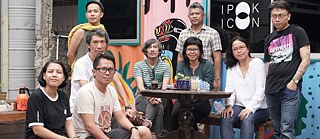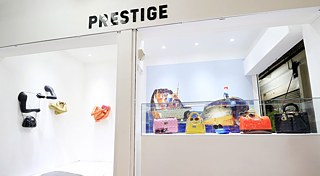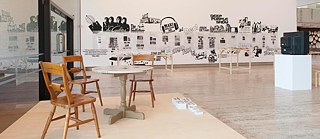documenta 15
A new era of documenta with ruangrupa

An International Finding Committee announced in Kassel that the Indonesian artist collective ruangrupa will curate the documenta 15 in 2022.
By Katrin Figge
After the documenta 14, which took place from June to September 2017, came under public scrutiny, many signs pointed to significant changes for the World Art Exhibition. These speculations were finally confirmed on 22nd February 2019: The eight-member International Finding Committee announced that they had unanimously decided to entrust the artistic direction of documenta 15 to the artist collective ruangrupa from Indonesia.
The news was surprising for two reasons: for the first time in documenta’s history, it is not an individual, but a whole group of curators taking the lead, and it is also the first time that the artistic direction hails from Asia. Why is now a good moment to do so?
The Finding Committee said that their decision was based primarily on the fact that ruangrupa has already demonstrated in the past the ability “to appeal to various communities, including groups that go beyond pure art audiences, and to promote local commitment and participation.”
The official press release further states: “Their curatorial approach is based on an international network of local community-based art organizations. We are eager to see how ruangrupa will develop a concrete project for and from Kassel. At a time when innovative strength particularly stems from independent organizations active on the community level, it seems only logical to offer this collective approach a platform with documenta.”
Art in public spaces
ruangrupa is a household name in the Indonesian art and culture scene. Founded in the year 2000 in the Indonesian capital Jakarta, ruangrupa – which translates as “a space for art” – is a core group of ten artists and creatives with its own cultural center in South Jakarta, which is active in many different fields. As a non-profit organization, it promotes the diffusion of artistic ideas in an urban context and the broad spectrum of culture through exhibitions, festivals, art labs, workshops, research as well as publications of books, magazines and (online) magazines.ruangrupa is also a longtime partner of the Goethe-Institut Indonesia and has been involved in various projects and collaborations. In 2015, when the Goethe-Institut Indonesia organized the German Season together with the German Embassy Jakarta and the German-Indonesian Chamber of Commerce and Industry EKONID, Ade Darmawan and influential German artist Tobias Rehberger joined forces for the project “Market Share”, which explored public spaces and urban realities in Jakarta. The participating artists from both Indonesia and Germany developed their works over several weeks at a traditional Indonesian market in the south of Jakarta, partly in cooperation with the local dealers and sellers.


New momentum for the documenta
“We want to create a globally oriented, cooperative, interdisciplinary art and culture platform that will have an impact beyond the 100 days of documenta 15,” they said during the press conference in Kassel.“Our curatorial approach aims at a different community-oriented model of resource usage – economical, but also taking ideas, knowledge, programs and innovations into account. If documenta was launched in 1955 to heal war wounds, why shouldn’t we focus documenta 15 on today’s injuries, especially ones rooted in colonialism, capitalism, or patriarchal structures, and contrast them with partnership-based models that enable people to have a different view of the world?”
The documenta, initiated by the Kassel-based art professor and designer Arnold Bode and launched for the first time in 1955, is considered one of the most important exhibitions of contemporary art in the world. It takes place every five years and can look back on steadily growing visitor numbers since its first edition.
In 2017, under the artistic direction of Polish curator Adam Szymczyk, the documenta for the first time took place in two cities, Kassel and Athens. Although documenta 14 set a new record with more than 1 million visitors at both venues, there was a lot of criticism – not only because of the financial deficit, but also because of the content: difficult to grasp, hardly understandable.
From this point of view, the selection of ruangrupa seems to come at the right time, to bring a wind of change at the documenta: through a deliberately participatory approach and years of experience building networks, the group is expected to ensure that art can be lived and experienced, instead of merely being looked at from afar.